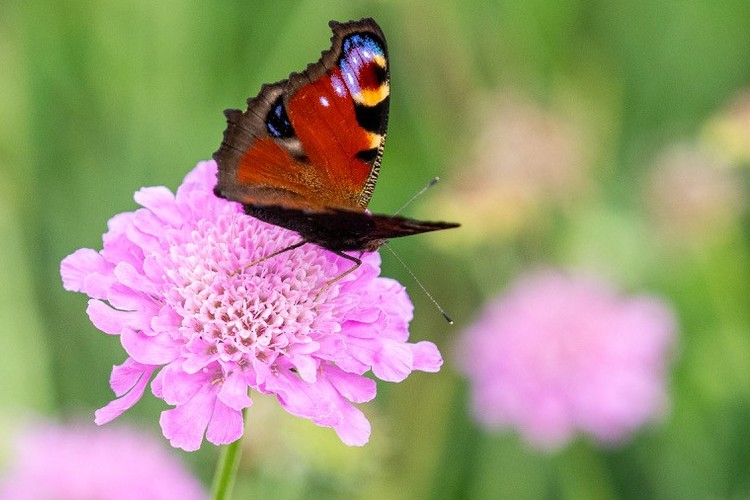Hardy's Quick Guide to Butterfly-friendly Gardening

Butterflies belong to the order Lepidoptera, this means ‘scale wing’ and it is these pigmented and reflective scales that give the wide variety of colour that we see on their wings. There are four stages in a butterfly’s life cycle and each lasts a different length of time for different species of butterflies:
- Egg - may hatch after a few days or wait an entire winter.
- Caterpillar - can last from 3 weeks to more than 20 months.
- Chrysalis - often lasts just a few weeks.
- Adult - can last from 4 days to 11 months.
Butterflies and moths are extremely important indicators of the state of the environment. There has been a dramatic decline to Britain’s butterfly numbers due to habitat destruction, agricultural intensification and pollution. Climate change is likely to also be having a detrimental effect on many species. Where some will benefit from a hotter dryer climate, the unpredictable weather patterns will be causing problems for others. Although we may feel we cannot personally change a lot to help them with the climate change issues, we can help replace some of the habitat that they are missing by planting butterfly friendly plants in our gardens.
Even though they are not as effective as bees, they do still pollinate our plants. To attract butterflies to your garden it is a good idea to have flower all year round, with the spring flowers giving nectar to butterflies that are waking from their winter hibernation and the autumn flowering plants giving them nectar to see them through the winter.
- Try and plant your butterfly friendly plants in a sunny, sheltered spot.
- Try growing a greater number of plant varieties - you will benefit a wider range of species.
- Prolong the flowering of your plants by dead heading. Not only will this give you more colour for longer, the butterflies will have more flowers to feed from.
- Don’t use pesticides, they will kill butterflies and other pollinating insects.
- Using peat free compost will also help species of butterfly (and other animals) that peat bogs are home to.
Some of the plant species that are good for butterflies are:
Aster; Symphyotrichum, Buddleja, Coreopsis; Echinacea, Eutrochium purpureum, Gaillardia, Knautia, Liatris spicata, Monarda, Phlox paniculata, Rudbeckia, Scabiosa, Sedum/Hylotelephium, Verbena bonariensis. For more butterfly and moth friendly plants see here
There's still time to get involved in the Big Butterfly Count organised by the Butterfly Conservation's which runs this year from Friday 18th July and Sunday 10th August 2025. Launched in 2010 it's become the largest national citizen science project. Spend 15 minutes recording butterflies and day-flying moths to help experts understand the status of these beautiful insects. You're very welcome to come to the nursery to conduct your count. For more information and to download your guide or app see: Big Butterfly Count (butterfly-conservation.org)
